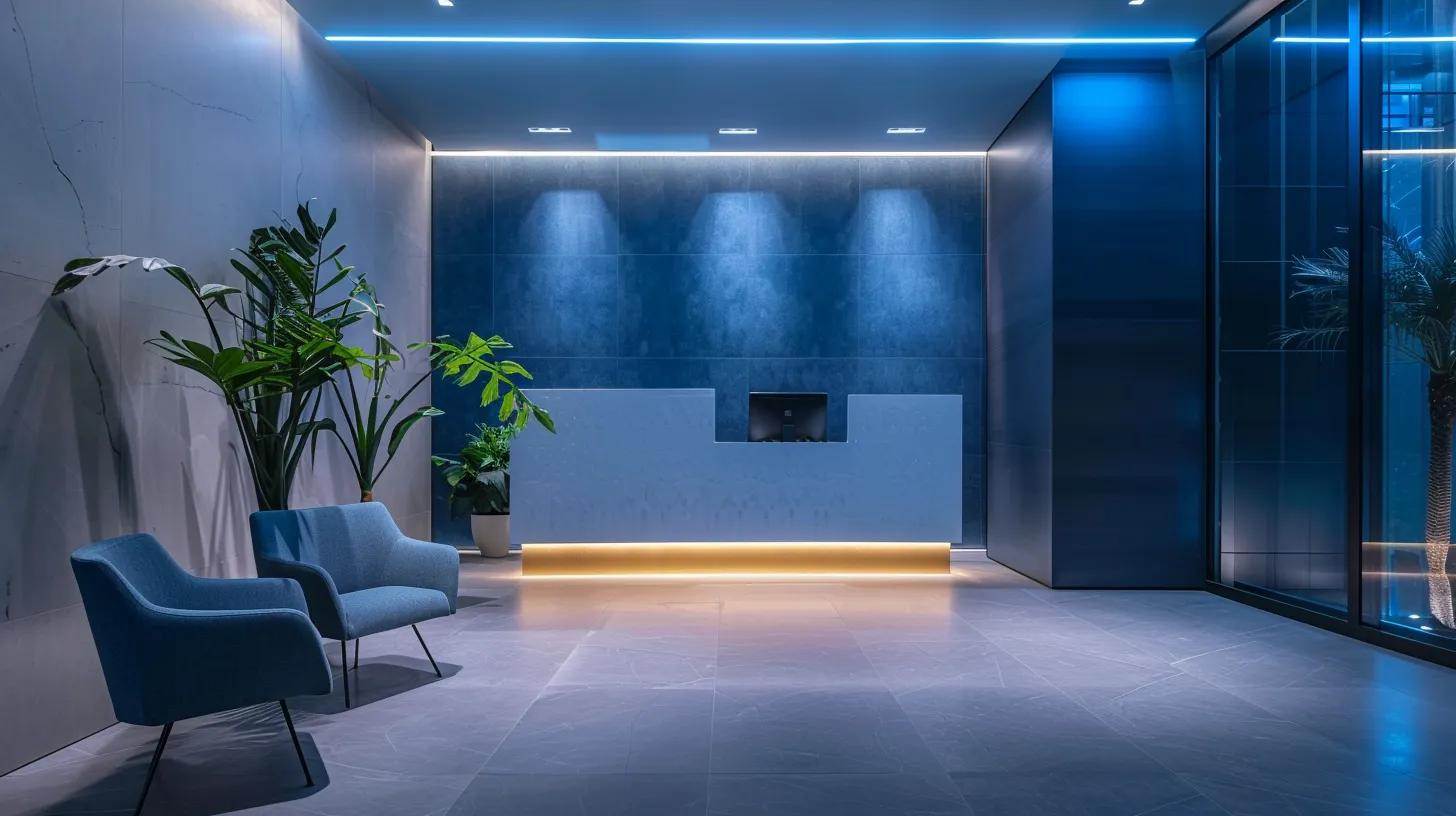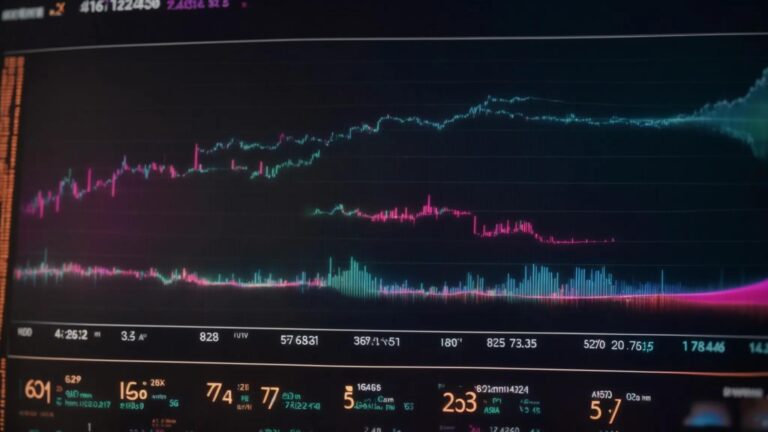Heads Up: When you purchase through links on our site, we may earn an affiliate commission at no cost to you.
Color often shapes how potential buyers perceive a real estate brand. This blog post will examine the meanings of different hues, the impact of your color palette on brand perception, and how to effectively apply color psychology to marketing strategies. You will learn to use colors to evoke feelings of prosperity or calm, ensuring your brand resonates with your target audience. Understanding color’s influence can help you create a more engaging brand identity, ultimately attracting more leads and increasing your success in the competitive real estate market.
Key Takeaways
- Color choices significantly impact client perception and emotional responses in real estate branding.
- Understanding color psychology helps create effective marketing materials that resonate with potential clients.
- Utilizing blue fosters trust and reliability, which is crucial for engaging prospective buyers.
- Incorporating yellow enhances attention and positivity, encouraging clients to take action.
- Aligning colors with target demographics improves brand recognition and appeal in a competitive market.
The Meaning of Colors in Real Estate

Understanding the psychological impact of colors is essential for effective real estate branding. Red evokes strong emotions and influences decision-making, while blue fosters trust and stability. Yellow captures attention with its optimistic tone, and green symbolizes growth and renewal. Each color plays a significant role in your color scheme, whether in your interior design or on business cards, shaping how potential clients perceive your asset.
Understanding the Psychological Impact of Colors
Understanding the psychological impact of colors is vital for your real estate branding strategy. Color theory reveals how different hues influence perception, building credibility with potential clients. For instance, a calming blue in a bathroom can create a serene atmosphere, promoting relaxation and comfort. At the same time, a secondary color like yellow can add a touch of brightness that captures attention and conveys optimism.
When you choose a color scheme, consider how specific colors can enhance or detract from the message you want to communicate. For example, incorporating green can symbolize growth and renewal, aligning with values such as sustainability. By thoughtfully selecting colors based on their psychological effects, you craft spaces and marketing materials that resonate more effectively with your audience, ultimately shaping their perception of your brand:
- Red evokes strong emotions.
- Blue fosters trust and stability.
- Yellow captures attention.
- Green symbolizes growth.
- Secondary colors can enhance mood.
Red and Its Influence on Emotion and Decision-Making
Utilizing red in your real estate branding can significantly impact emotional responses and decision-making processes. This bold color captures attention, making it effective for landing pages and promotional materials where you want to invoke urgency. As a real estate agent, strategically incorporating red can increase engagement, encouraging potential clients to explore your offerings further.
Moreover, red’s association with strong emotions can enhance the effectiveness of your marketing approach. It creates a sense of excitement and passion, which can be particularly beneficial when showcasing properties with vibrant features. When potential buyers associate these emotions with your brand, they may feel more inclined to trust your expertise and follow through with inquiries, ultimately improving your overall readability in the competitive real estate market:
| Color | Emotional Impact | Application in Real Estate |
|---|---|---|
| Red | Strong emotions, urgency | Promotional materials, landing pages |
| Blue | Trust, stability | Business branding, interior design |
| Yellow | Optimism, attention | Signs, calls to action |
| Green | Growth, renewal | Sustainability themes, eco-friendly properties |
Blue’s Role in Creating Trust and Stability
Blue is crucial in establishing trust and stability in the real estate industry, making it a preferred choice for marketing materials among estate agents. When potential buyers encounter a blue-themed brand, their brains associate this color with dependability and professionalism. Incorporating blue into your branding signals to consumers that you are a trustworthy real estate professional who values their needs and concerns.
Utilizing shades of blue in your marketing materials can enhance the appeal of your offerings and foster a sense of security for prospective clients. For instance, a calming blue background in your online listings or business cards can create an inviting atmosphere that encourages potential buyers to engage further. As an estate agent, this approach differentiates you in a crowded market and establishes a positive emotional connection that can lead to increased inquiries and successful sales.
The Effect of Yellow on Optimism and Attention
Yellow is known for its ability to evoke a time and draw attention, making it a valuable element in your marketing strategy. When potential clients see yellow incorporated into your property advertisements or newsletters, the bright hue can stimulate positive feelings, enhancing their overall perception of your brand. This association can be particularly beneficial in showcasing listings, as it can help capture the hearts of potential buyers, drawing them in by increasing engagement.
Utilizing yellow heightens attention and positively impacts consumer emotions, potentially raising their heart rate with excitement over a new property. When applied correctly, yellow creates a sense of harmony that encourages prospective clients to act by visiting your website or contacting you for more information. Understanding the emotional influence of yellow allows you to create effective marketing materials that resonate deeply with your audience:
| Color | Effect | Application in Real Estate |
|---|---|---|
| Yellow | Optimism, attention | Promotions, newsletters |
Green’s Connection With Growth and Renewal
Green is often associated with growth and renewal, making it a powerful color for your real estate brand perception. When you incorporate green into your logo or marketing materials, you signal potential clients that you value sustainability and environmental responsibility, which can enhance their perception of your business. This color represents nature and evokes feelings of wealth and abundance, suggesting that your properties are desirable investments.
The brightness of green can improve engagement in social media marketing, attracting attention as a symbol of fresh opportunities. As a real estate professional, leveraging the calming effects of green in your designs reinforces positive behavior in potential buyers, making them more likely to trust your brand and feel optimistic about working with you.
| Color | Symbolism | Impact on Brand Perception |
|---|---|---|
| Green | Growth, renewal | Enhances trust and sustainability |
How Color Shapes Brand Perception in Real Estate
- Instant feedback
- Valuable insights
- Actionable tips

The relationship between color and brand recognition shapes real estate agents’ perceptions. Different hues can evoke emotional responses, such as the tranquility associated with navy blue or the aggression seen in bolder colors. This section will explore case studies of successful real estate brands and their effective color strategies, helping you understand how to enhance your brand perception.
The Relationship Between Color and Brand Recognition
Understanding the relationship between color and brand recognition is essential for real estate efforts. When you choose shades of blue, for instance, you evoke feelings of sophistication and trustworthiness, which can set your brand apart in a crowded marketplace. Effective branding requires an awareness of how colors influence perception, guiding potential clients toward a favorable view of your services.
Creativity in color choices can significantly enhance your brand‘s visibility and appeal. By strategically using colors that resonate with your audience, you create a lasting impression that aligns with your message and values. For example, consistent use of specific colors in marketing reinforces brand identity, making your real estate brand instantly recognizable while fostering an emotional connection with potential clients.
Emotional Responses Triggered by Color Choices
The colors you choose for your real estate brand can elicit strong emotional responses that significantly impact potential clients. For example, bold colors like red are associated with urgency and can create a sense of immediacy, much like a stop sign signaling an important action. In contrast, softer hues, when used as complementary colors, can convey calmness and reliability, fostering a sense of trust that is essential in real estate marketing.
Your brand‘s color palette helps define its identity, and the energy of each color influences how clients perceive your business. Effectively incorporating a mix of colors enhances visual appeal and directs emotional engagement. Understanding these dynamics allows you to craft marketing strategies that attract attention and resonate deeply with potential buyers, making them more likely to connect with your brand.
Case Studies of Successful Real Estate Brands and Their Color Strategies
Successful real estate brands often leverage color strategies to create compelling signage that resonates with their target audience. For instance, a well-known real estate company uses a prominent blue shade in its branding, symbolizing trust and reliability. This color choice draws attention to their real estate flyers and instills a feeling of security among potential buyers, making them more likely to engage with the brand.
Another effective example is a leading agency that uses vibrant red accents in its marketing materials to evoke urgency and excitement. This choice has successfully attracted attention and directed potential clients to take prompt action, whether visiting a property or making inquiries. This agency effectively connects with its target audience by aligning color with its branding efforts, enhancing brand recognition and client engagement.
Applying Color Psychology to Real Estate Marketing

Aligning colors with your target audience demographics is essential for a real estate professional to communicate branding effectively. Creating cohesive brand messaging with color, including primary colors and shades of green, can enhance your market presence. This section offers practical tips for using color in your marketing materials to boost engagement and resonate with potential clients.
Aligning Colors With Target Audience Demographics
When aligning colors with your target audience demographics, it’s essential to understand how different hues can evoke specific moods that resonate with potential clients. For instance, a monochrome color scheme can convey sophistication and elegance, appealing to luxury home buyers. In contrast, vibrant colors may attract younger demographics seeking modern, dynamic living spaces. Tailoring your color choices in email and digital marketing campaigns can enhance engagement and strengthen your brand connection with your audience.
Applying wisdom in color selection allows you to create a cohesive brand message that speaks to your client’s preferences. By analyzing demographic data, you can identify which colors align with your target market’s values and lifestyle. For example, incorporating green may appeal to environmentally-conscious buyers, while warm tones can foster a sense of comfort and welcome. Understanding these nuances lets you develop more effective marketing materials, ultimately increasing your chances of lead generation:
- Understand demographic preferences for effective color choices.
- Use monochrome schemes for sophistication.
- Incorporate vibrant colors to attract younger audiences.
- Analyze client values to align colors with marketing strategies.
Creating Cohesive Brand Messaging With Color
Creating cohesive brand messaging with color is essential for real estate marketing effectiveness. When designing brochures or real estate signs, you should select colors that reflect your brand identity and resonate with potential clients. For example, colors that evoke envy or aspiration can create an inviting atmosphere, encouraging prospects to engage with your offerings more deeply.
Understanding color psychology allows you to craft marketing materials that communicate your brand values. This approach allows you to connect emotionally with your audience, making your real estate signage stand out while promoting a sense of trust and comfort. A well-chosen color palette can transform your promotional efforts, ensuring your brand message is visually appealing and impactful.
Practical Tips for Effective Color Use in Marketing Materials
To effectively use color in your real estate marketing materials, prioritize sustainability and innovation in your design choices. By selecting shades that reflect eco-friendly principles, such as greens and earth tones, you signal potential clients that your brand values responsible practices. Incorporating the RGB color model allows you to mix colors strategically to create a palette that resonates with your audience’s preferences while communicating a modern, forward-thinking approach to real estate.
When designing marketing materials, always consider your target market. For instance, if you’re appealing to eco-conscious buyers, emphasize green tones to highlight sustainability. On the other hand, for clients drawn to innovation and cutting-edge properties, employing vibrant colors can evoke excitement and engagement. By understanding how these color choices influence brand perception, you can craft materials that connect with your audience, ultimately enhancing your real estate brand’s appeal and effectiveness.
Building a Color Palette That Resonates

When building a color palette that resonates with your real estate brand, consider several factors to enhance your branding efforts. You will explore the balance between aesthetic appeal and emotional resonance, understanding how colors like grey can convey sophistication. Effective examples of color palettes will also illustrate how to use optimism and other traits for lead generation in your web design and marketing materials.
Factors to Consider When Creating a Color Palette
When creating a color palette for your real estate brand, consider how your choices reflect your core values and connect with your customers. For instance, softer shades can evoke reliability and approachability, which is crucial when potential clients examine your business card or marketing materials. This knowledge serves aesthetic purposes and reinforces your brand message, making your offerings more appealing in many ways.
Additionally, consider the consistency of your color palette across various content marketing platforms. A well-constructed color scheme enhances brand recognition and fosters trust, especially in a competitive real estate market. When branding materials, from brochures to online listings, use the same color approach, it creates a cohesive experience that resonates with your audience, encouraging them to contact you for your services.
Balancing Aesthetic Appeal and Emotional Resonance
When developing a color palette for your real estate brand, it’s essential to balance aesthetic appeal and emotional resonance. You want to create visuals that look appealing and evoke positive feelings, such as happiness. For instance, incorporating warm tones can enhance the welcoming atmosphere of your marketing materials, making them more relatable to potential clients while signaling the benefits of real estate investing.
Moreover, consider how different colors might resonate with diverse gender demographics within your audience. Understanding these nuances can lead to a well-thought-out color palette that connects emotionally with clients. By choosing colors that signify trust and optimism, you can bridge the gap between aesthetic choices and emotional impact, ultimately fostering a strong brand identity that attracts and retains clients.
Examples of Effective Color Palettes in Real Estate Branding
Regarding effective color palettes in real estate branding, several established companies demonstrate how thoughtful color choices can create strong brand identities. For instance, a renowned real estate firm uses a combination of deep navy blue and crisp white, which evokes feelings of trust and professionalism. This palette helps establish a reputable brand image and enhances client perception, making potential buyers feel secure in their choices.
Another example can be seen in a leading agency that features vibrant orange and neutral gray tones in its branding. This blend captures attention and communicates energy and optimism, appealing to younger demographics. Implementing these successful color palettes enables you to convey the right message and connect with your audience, guiding them toward further engagement with your services:
- Navy blue and white evoke trust and professionalism.
- Vibrant orange with gray communicates energy and optimism.
- Thoughtful color choices enhance brand identity.
- Successful palettes connect emotionally with the audience.
The Role of Color in Digital Marketing Strategies

Color is significant in your digital marketing strategies, influencing how potential clients perceive your real estate brand. Optimizing website design with color psychology can enhance user experience, while using the right colors on social media increases engagement. Additionally, selecting effective color choices in email marketing can boost click-through rates, leading to more interactions and interest in your services.
Optimizing Website Design With Color Psychology
Optimizing your website design using color psychology is essential for capturing the attention of potential clients in the real estate market. You can connect emotionally with visitors by strategically choosing colors that align with your brand values. For instance, using calming blues can foster trust and reliability, encouraging users to explore your listings and services more.
A cohesive color palette throughout your site enhances user experience while reinforcing your brand identity. Simple elements like call-to-action buttons should use vibrant colors that stand out, guiding visitors toward the desired actions, such as contacting you or viewing properties. Consider these steps to improve your website’s effectiveness in engaging potential clients:
- Select colors that align with your brand values.
- Use calming hues to build trust.
- Create a cohesive palette for consistency.
- Implement vibrant call-to-action buttons.
The Influence of Color on Social Media Engagement
Your choice of color on social media can significantly impact engagement with potential clients in the real estate market. Utilizing bright and inviting colors, such as yellow or orange, can capture attention and stimulate positive emotions, making your posts more likely to be shared and liked. For instance, incorporating these colors into property photos or promotional graphics encourages a deeper connection with your audience, ultimately enhancing your brand‘s visibility.
Additionally, consistency in your color scheme across social media platforms helps reinforce your brand identity and fosters familiarity among followers. When your posts frequently feature specific colors that align with your real estate brand, they cultivate trust and recognition, making it easier for potential clients to remember your services. This approach increases engagement and builds a strong emotional bond between your brand and your audience, guiding them toward making inquiries or setting appointments.
Enhancing Email Marketing Effectiveness Through Color Choices
Color choices in email marketing can significantly enhance your communication with potential clients in the real estate sector. By selecting vibrant hues like yellow to draw attention or calming blues to establish trust, you create an inviting atmosphere that encourages readers to engage with your content. Consider using distinct color palettes that reflect your brand identity and resonate with your target audience’s preferences, making your emails more effective.
Implementing a cohesive color scheme across your email campaigns helps to reinforce brand recognition and conveys professionalism. For example, using a consistent color for call-to-action buttons can guide potential clients toward desired actions, like scheduling a viewing or contacting you for more information. When your emails are visually appealing and strategically designed, they not only improve user experience but also increase the likelihood of generating leads:
| Attention-grabbing, positive energy | Effect | Application in Email Marketing |
|---|---|---|
| Yellow | Attention grabbing, positive energy | Subject lines, headers |
| Blue | Trust, reliability | Body text, backgrounds |
| Green | Growth, sustainability | Call-to-action buttons |
| Orange | Encouraging action, warmth | Promotional offers, highlights |
Insights on Color Trends in Real Estate Branding

Recent trends in real estate company color choices reveal how brands increasingly adopt strategic palettes to enhance perception. Cultural factors shape how colors are viewed, influencing client reactions and engagement. Understanding the future of color in real estate marketing strategies will empower you to align your branding efforts effectively with evolving market demands.
Recent Trends in Color Choices for Real Estate Companies
In recent years, real estate companies have shifted toward using softer, more muted color palettes to create a sense of calm and sophistication. Many brands incorporate earth tones and pastels instead of relying solely on bold primary colors. This approach aligns with current trends in interior design and reflects a commitment to sustainability and wellness, appealing to environmentally conscious consumers who value brands that resonate with their lifestyles.
Moreover, there is a growing trend of integrating technology-driven color choices into digital marketing strategies. Real estate companies utilize variations of vibrant colors for their online presence to grab attention and prompt engagement. For example, using bright call-to-action buttons or promotional graphics can effectively lead potential clients to take the next step, enhancing your visibility in a competitive market. This strategic use of color increases user interaction and strengthens brand perception as modern and approachable.
How Cultural Factors Affect Color Perception
Cultural factors significantly shape how colors are perceived in the real estate market. For instance, in Western cultures, blue often conveys feelings of trustworthiness and reliability, making it a favored choice for branding. In contrast, colors like red may seem aggressive or signify danger, while in some Eastern cultures, red represents happiness and good fortune. Understanding these cultural nuances allows you to tailor your marketing strategies to resonate with diverse client backgrounds.
Your choice of colors must reflect the cultural context of your target audience to build a strong brand perception. For example, earthy tones may appeal to clients who prioritize sustainability and environmental awareness, while vibrant colors might attract younger, dynamic buyers looking for modern aesthetics. By aligning your color choices with cultural preferences, you enhance your brand‘s relatability and increase the likelihood of effectively engaging potential clients.
The Future of Color in Real Estate Marketing Strategies
The future of color in real estate marketing strategies focuses on creating authentic connections with potential clients. As consumer preferences shift towards brands that embody transparency and environmental awareness, you can expect to see a rise in the use of earthy tones and muted palettes. By adopting these trends, your brand can convey a sense of reliability and approachability, which is critical for attracting discerning buyers in a competitive market.
Additionally, innovative technology will influence color choices in digital marketing. Adaptive color schemes that respond to user interactions can enhance user experience on your website or social media platforms. By leveraging this approach, you create a dynamic brand presence that aligns with client expectations, ultimately driving higher engagement and lead generation.
Conclusion
Understanding how color influences real estate brand perception is crucial for attracting and engaging potential clients. By strategically selecting colors, you can convey emotions such as trust, optimism, and growth, which resonate with your audience’s values. Effective use of color enhances brand recognition and fosters an emotional connection that drives lead generation. Implement these insights to elevate your marketing strategy and establish a compelling brand identity in the competitive real estate market.













